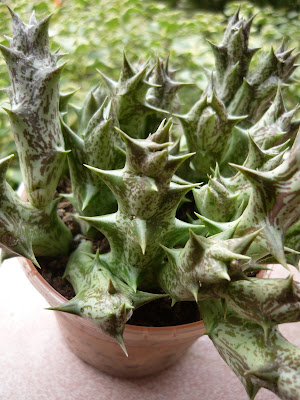The variety of plants that can live in and around fresh water all over the world is quite extensive. Plants that can survive and thrive in wet, marshy areas or that live in and on top of water are called aquatic or hydrophytic plants (hydrophytes). Some aquatic plants grow completely beneath the surface, and some grow partially beneath and partially above. Aquatic plants can grow in the wild, or in aquariums and man-made ponds.
Requirements
In addition to the hydrogen, oxygen and carbon found in the water and air that they live in, aquatic plants also need the nutrients that are found in the rich soil that is in and around freshwater ecosystems. These nutrients include a large range of macro-elements such as magnesium, nitrogen, phosphorous and potassium. Decomposing organic matter that surrounds freshwater areas adds to these nutrients.
There are three major types of hydrophytic plants. There are plants that are rooted in the mud. These plants can have leaves that are either completely submerged in the water or that extend out of the water. The second type is floating plants whose roots do not attach to the bottom but float free in the water. The majority of these plants' leaves or flowers are above the surface. The third type is plants that are rooted in the mud along the edge of the water; they are somewhere between being an aquatic plant and a terrestrial plant.
Anacharis
Submerged aquatic plants help to produce oxygen in the water, and are very beneficial to aquatic life. For this reason, submerged plants are very popular with aquarium owners. There are many species of submerged aquatic plants, including Anacharis, Cabomba, Hornwort, Red Ludwigia and Vallisneria
Water Lettuce
Floating aquatic plants also help to oxygenate and filter the water. Floating plants are a favorite of those who create their own backyard ponds and Koi ponds. Some examples of floating plants are Frogbit, Large Leaf Sensitive Plant, Parrot's Feather, Red Stemmed Parrot's Feather, Water Hyacinth, Jumbo Water Hyacinth and Water Lettuce. The most popular versions of floating plants for the backyard Koi pond, mostly because of their beautiful blooms, are the Water Lily and the Lotus.
 Frogbit
Frogbit
 Salvinia natans
Salvinia natans
 Water hyacinth
Water hyacinth
Bengal Canna
Aquatic plants that grow at the sides and on the banks of freshwater areas are sometimes called bog plants. These range from the grasses that grow in marshlands to Elephant Ears and Rushes. Some examples of bog plants are Arrowheads, Cattails and Reeds, Floating Hearts, Bog Irises, Louisiana Irises, Rushes, Cannas, Palms, Papyrus, Elephant Ear and Bog Taro.
 Moccasin flower orchid
Moccasin flower orchid
 Acorus americanus
Acorus americanus
 Sarracenia
Sarracenia
1) Trees receive an estimated 90% of their nutrition from the atmosphere and only 10% from the soil.
2) Trees grow from the top, not from the bottom as is commonly believed. A branch's location on a tree will only move up the trunk a few inches in 1000 years.
3) No tree dies of old age. They are generally killed by insects, disease or by people. California Bristlecone Pines and Giant Sequoias are regarded as the oldest trees and have been known to live 4,000 to 5,000 years.
4) There are about 20,000 tree species in the world. The United States has one of the largest tree treasuries second only to India.
5) The largest area of forest in the tropics remains the Amazon Basin, amounting to 81.5 million acres.
6) Arbor Day was first observed in Nebraska in 1872. That state is now home to one of the world's largest forests planted by people - over 200,000 acres of trees.
7) Some trees can "talk" to each other. When willows are attacked by webworms and caterpillars, they emit a chemical that alerts nearby willow of the danger. The neighboring trees then respond by pumping more tannin into their leaves making it difficult for the insects to digest the leaves.
8) Knocking on wood for good luck originated from primitive tree worship when rapping on trees was believed to summon protective spirits in the trees.
9) Trees can induce rainfall by cooling the land and transpiring water into the sky from their leaves. An acre of maple trees can put as much as 20,000 gallons of water into the air each day.
10) The most massive living thing on earth is the Giant Sequoia in the Redwood Forest of California. It stands nearly 30 stories tall and 82.3 feet in circumference. Its weight is estimated at 2,756 tons.
This time I would like to show you guys some of the cacti that I've repot recently. Some of these was bought during vacation on Cameron Highland last year. Actually I don't really know what their names are and how to propagate them succesfully since I'm new in collecting all of this cactus and succulents. Anyway below are the cactus that I was talking about. Quite unique isn't it?!



















































